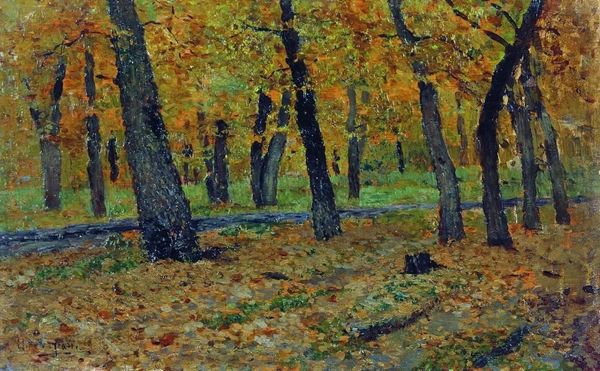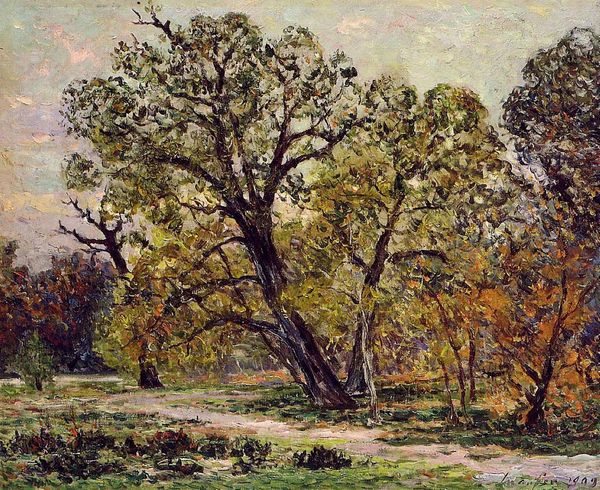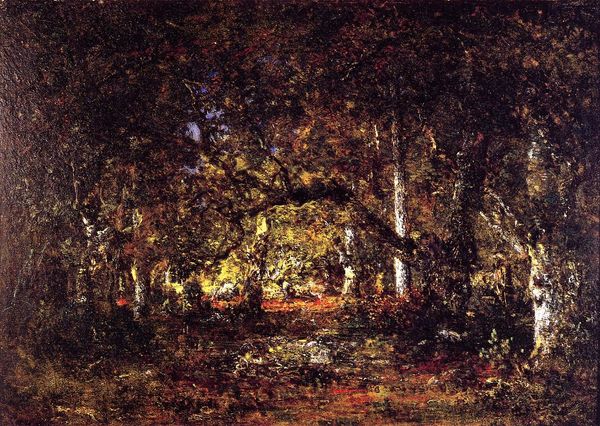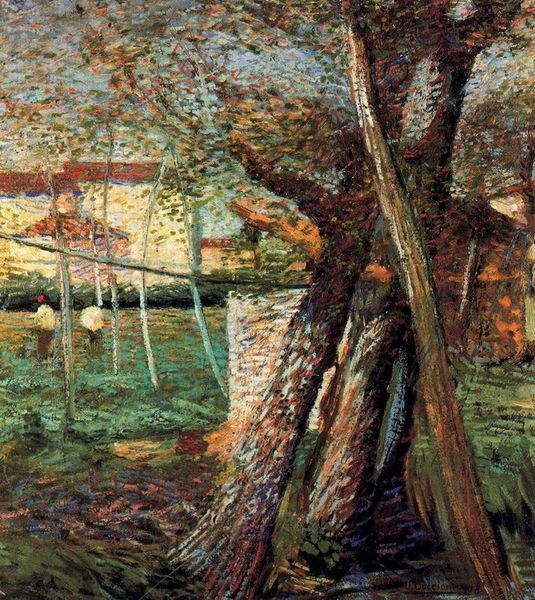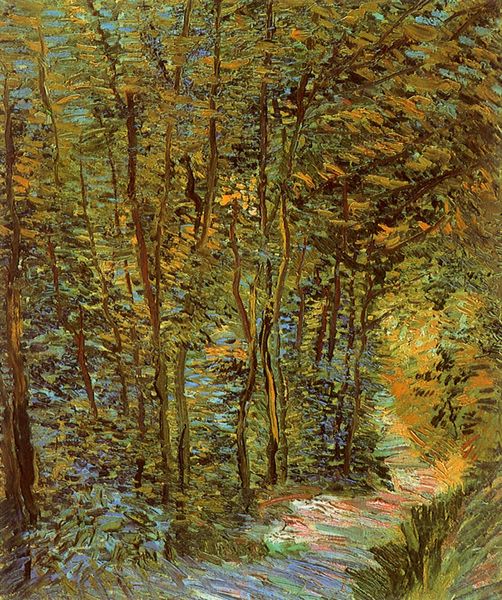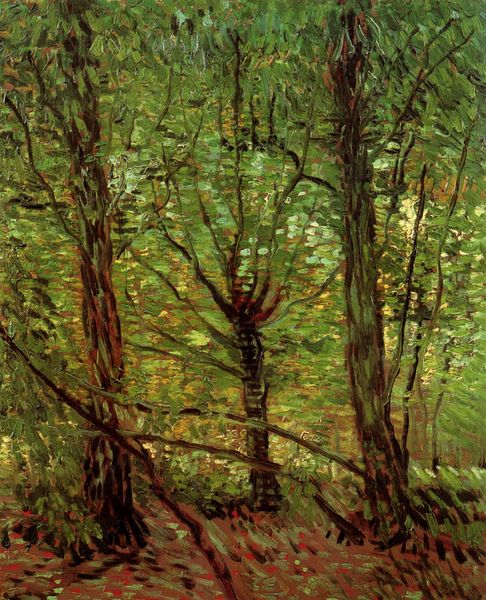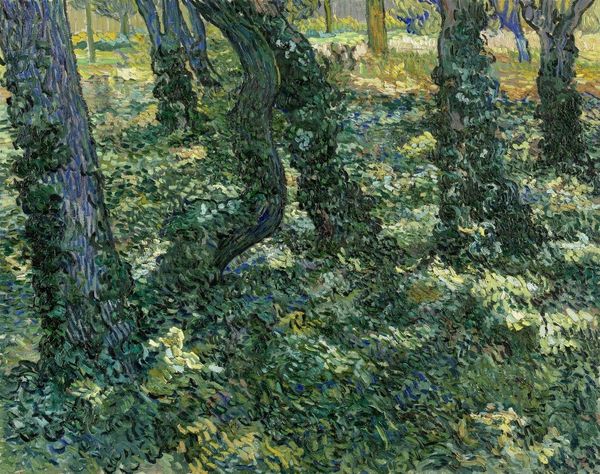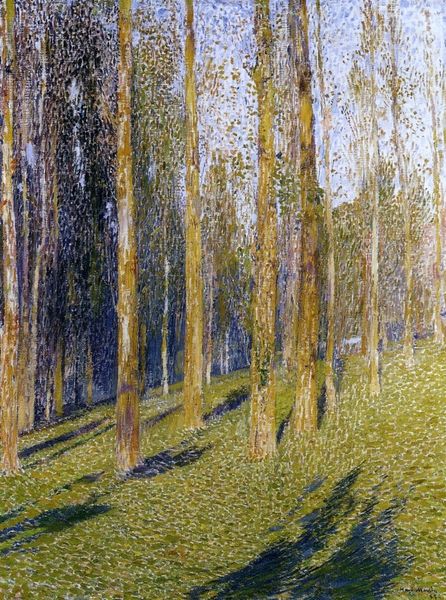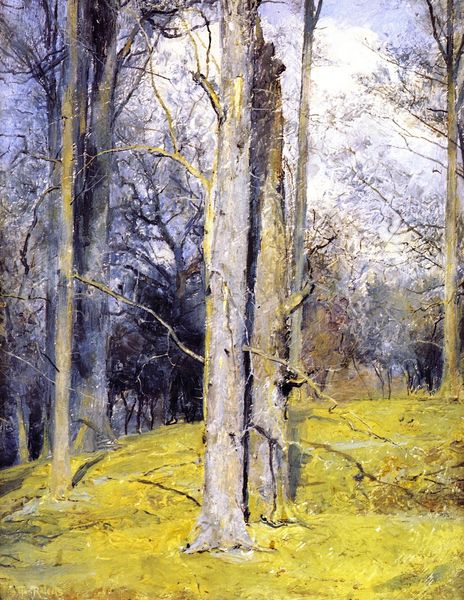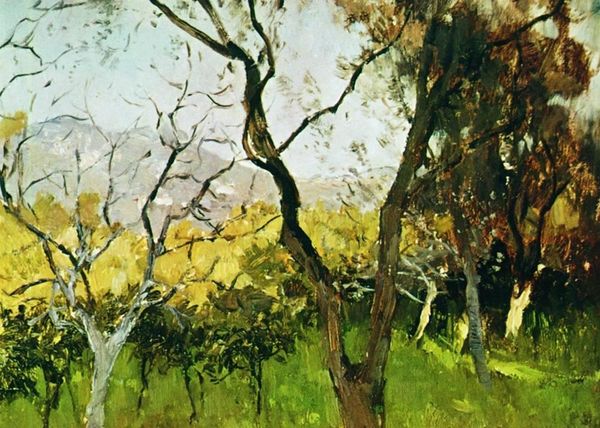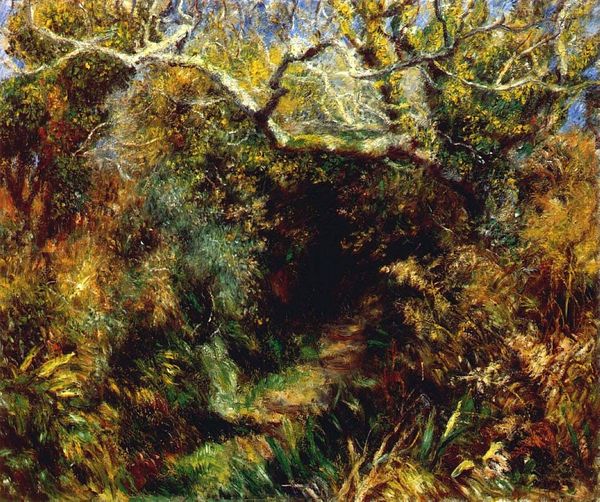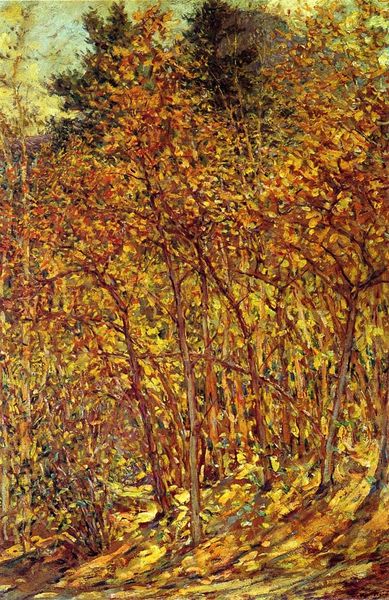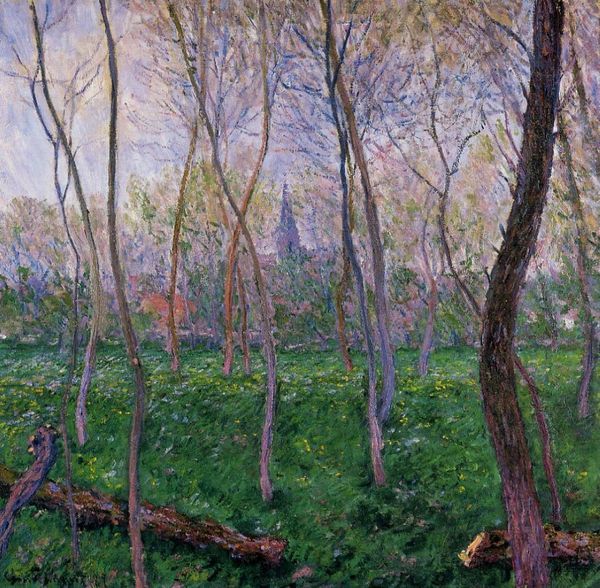
Copyright: Public domain
Curator: Childe Hassam painted “Connecticut Hunting Scene” in 1904. He rendered it in oil, most likely en plein air given the period, and the vibrant way he captured light playing on the trees and fallen leaves. What do you think? Editor: There's a definite chill to it. That autumn light and skeletal tracery of branches against the pale blue sky evoke a kind of… somber quietude. Curator: Yes, somber might be the word. Hunting as a leisure activity for the elite in the early 20th century needs to be addressed. Who gets to enjoy and control the natural landscape, and at what cost to the animal, to the ecosystem, and to labor forces excluded from the hunt? Editor: Well, Hassam often depicted scenes of everyday life. How do you see this fitting within the public perception and socio-political context of hunting at the time? Did it reinforce existing hierarchies or challenge them? Curator: I think we see an affirmation of power structures here. The hunter, armed, central yet nearly invisible within the landscape – it's about claiming dominion. Even the color palette, primarily golds and browns, suggests wealth and the bounty of the land available to be taken. The fact that we can barely make out the human figure blends him into the forest but also asserts his superiority over it. It's insidious how nature becomes a backdrop for displays of male privilege and prowess. Editor: It's definitely food for thought. I can also see an interesting formal element. Notice how the artist juxtaposes the seemingly chaotic arrangement of the undergrowth against the calculated positioning of the human figure. Does that contribute to the power dynamics you've mentioned? Curator: Precisely. What initially appears to be natural spontaneity is strategically constructed to reinforce the idea of man's intervention and control over the seemingly 'untamed' wilderness. Editor: Considering the way that Hassam portrays hunting as a quiet interaction with nature is unsettling because, given our modern context, it omits to show the very real and brutal nature of the activity. Curator: It highlights that sometimes what is left out is as important as what’s included. Editor: It's a reminder to look beneath the surface of idyllic landscapes, revealing the narratives of power and privilege embedded within them.
Comments
No comments
Be the first to comment and join the conversation on the ultimate creative platform.
